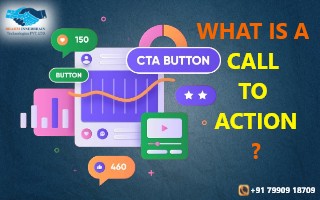In the vast and dynamic world of digital marketing, success often hinges on the ability to guide and influence user behavior. One of the most effective tools for achieving this is the Call to Action (CTA). Whether you’re looking to boost conversions, increase engagement, or drive sales, understanding and leveraging CTAs can be a game-changer for your marketing strategy. In this article, we’ll explore what a Call to Action is and how it functions as a pivotal element in digital marketing.

What is a Call to Action?
A Call to Action (CTA) is a prompt or instruction that encourages the audience to take a specific action. This action can vary depending on the marketing goal, ranging from clicking a link, signing up for a newsletter, making a purchase, downloading a resource, to following a social media account. CTAs are typically found in various forms of digital content, including websites, emails, social media posts, and online advertisements.
The Role of CTAs in Digital Marketing:
CTAs play a crucial role in guiding user behavior and driving conversions. Here’s how they function within the digital marketing landscape:
1. Driving Conversions: CTAs are designed to convert passive visitors into active participants by encouraging them to take a specific, desired action. Whether it’s filling out a form, making a purchase, or subscribing to a service, a well-crafted CTA can significantly increase conversion rates.
2. Enhancing User Experience: Clear and compelling CTAs can enhance the user experience by providing a straightforward path to the next step. This reduces friction and confusion, making it easier for users to engage with your content and complete desired actions.
3. Measuring Success: CTAs serve as measurable touchpoints within your digital marketing campaigns. By tracking CTA performance, marketers can gain insights into user behavior, campaign effectiveness, and areas for improvement.
Key Elements of an Effective CTA:
Crafting an effective CTA involves several key elements that can influence its success:
1. Clarity and Simplicity: Ensure that your CTA is clear and easy to understand. Avoid ambiguous language and use straightforward instructions that tell users exactly what you want them to do.
2. Compelling Language: Use action-oriented and persuasive language to motivate users. Phrases like “Get Started,” “Join Now,” “Download Free,” or “Discover More” can create a sense of urgency and appeal.
3. Visibility and Placement: Position your CTA prominently within your content. It should be easily noticeable and accessible, whether it’s placed at the end of a blog post, within an email, or on a landing page.
4. Design and Visual Appeal: Design your CTA to stand out visually. Use contrasting colors, bold fonts, and attractive buttons to draw attention and make it visually appealing.
5. Value Proposition: Communicate the value or benefit of taking the action. Explain what users will gain or how they will benefit by clicking on your CTA.

Examples of Effective CTAs:
1. E-commerce: “Shop Now and Enjoy 20% Off Your First Order”
2. Content Marketing: “Download Our Free E-book for Expert Tips”
3. Email Marketing: “Subscribe to Our Newsletter for Exclusive Updates”
4. Social Media: “Follow Us for Daily Inspiration and Updates”
5. Lead Generation: “Get Your Free Quote Today”
Conclusion:
In the competitive and fast-paced world of digital marketing, a well-crafted Call to Action can be the difference between a successful campaign and a missed opportunity. By understanding the importance of CTAs and incorporating them strategically into your marketing efforts, you can effectively guide user behavior, boost conversions, and achieve your marketing goals. Embrace the power of CTAs and unlock new potential for your digital marketing success.
